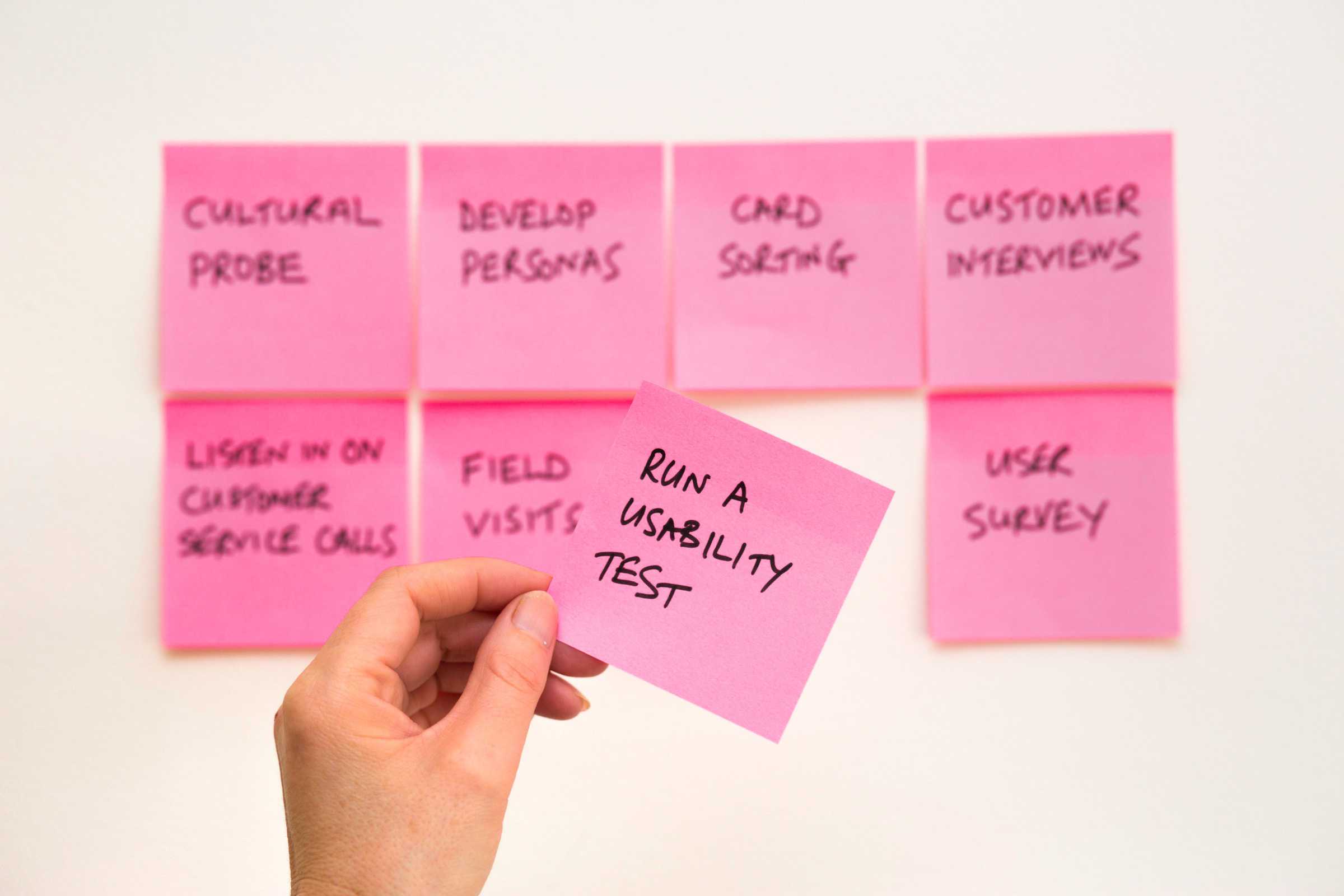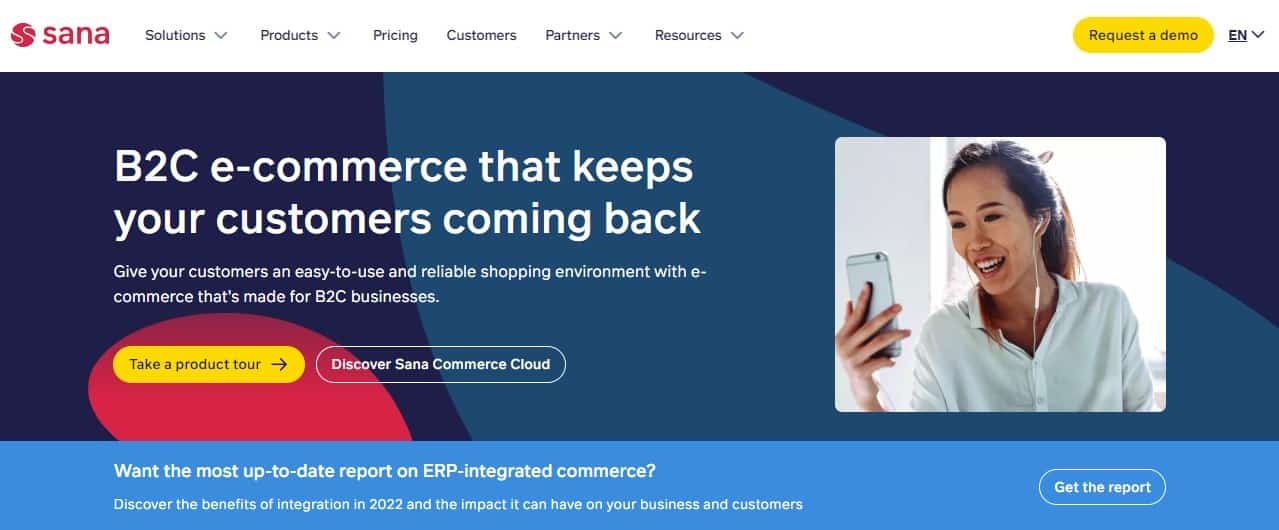Unlocking Online Potential: 6 Best Practices To Boost B2C Ecommerce Sales
Running a business-to-consumer (B2C) ecommerce company is no child’s play. The tasks of finding the right online platform, sourcing for suppliers and manufacturers, building a website, managing inventory, handling payment processes and overseeing product shipping, among others, are indeed not for the fainthearted.
Now, imagine putting in all this effort and still not getting any impressive sales. Meanwhile, in 2023, global retail ecommerce sales are increasing at a 10.4% rate. It’s therefore valid to ask why you’re not experiencing this sales boom, which businesses are laughing all the way to the bank, and what they are doing differently.
For what they’re doing differently, you’ll get the answer here. This article highlights the best strategies you need to practice to boost your retail ecommerce business.
1. Leverage usability testing tools for improved user experience

No doubt, usability testing tools are instrumental to the sales growth of an online B2C business. These software solutions allow you to check the usability of your website design and determine if users find it intuitive and usable enough to achieve their goals.
Whether or not website visitors get converted to customers depends largely on these visitors’ experiences on your website. The better their experience, the likelier they are to buy from you. This is where usability testing tools come in. They help you gather data from real users to improve your website’s design and enhance user experience.
Benefits of usability testing include:
- Being able to understand your users’ needs
- Product improvement
- Making informed design decisions
- Correction of product issues before release
- Ability to monitor how users interact with your product
With these benefits, it’s clear that usability testing is not an abstract design function; it is critical to product success. When you test your ecommerce website for usability, you not only get better insights for improvement, you become confident that your product will be well-received in the market.
2. Embrace B2C ecommerce integration solutions

Why go through a long, difficult route when there’s a shorter, more effective one? B2C ecommerce integrated solutions are one-stop-shops that allow you to harmonize different parts of your operations with third-party platforms or services to enhance efficiency, improve customer experience and boost sales.
This software manages all your ecommerce operations, driving process automation and increasing market share. It makes purchasing smoother and more reliable and offers specialized buying experiences with customized marketing abilities.
Aspects of your operations that can be integrated with this software include: Aspects of your ecommerce operations that these solutions help you integrate include the following:
- Inventory management systems
- Payment gateways
- Customer relationship management (CRM) systems
- Shipping carriers
- Email marketing platforms
Now, improved sales are not the only advantage of adopting a B2C ecommerce integration software. Other benefits are:
- Better customer convenience
- Access to consistent data
- Improved web store quality
- Constant growth
An ecommerce integration software lets you work smart instead of just working hard. By helping you streamline your operations, you save operational costs and time. You make more profit with less input.
3. Make your website design mobile-responsive

You’re reducing your chance for more customers if your website design is not mobile-responsive. This is because most people spend about 4.20 hours on their phones daily, more time than they spend on any other device.
It’s therefore logical that a lot of shopping is done on the phone. So, if your website only caters to desktop users, you’re leaving a lot of money on the table. To increase sales, ensure your product is accessible on mobile phones and tablets.
A mobile-responsive website also gives you an SEO advantage. The reason is that search engines give better visibility to websites that are mobile-friendly. This visibility leads to organic traffic that boosts sales.
Another reason why you must optimize your website for mobile phones is because it reduces the bounce rate. Imagine a prospective buyer starting their customer journey on their computer and wanting to complete it on their phone, only to realize they can’t because your website is not mobile-friendly. Not a pleasant scenario, you’ll agree.
To avoid this and many other client-repellent scenarios, be sure to build a responsive website. Here are some tips for a mobile-friendly website design.
- Use flexible grid systems and layouts
- Ensure your buttons and other interactive elements are touch-friendly
- Compress and optimize your media so they can load faster on mobile devices
- Use fonts that will be legible on smaller screens
Expand your reach by building a mobile-responsive website. Do some more research on the best ways to create a mobile-friendly website. By doing this, you make it easier for customers and prospects to buy from you.
4. Offer a seamless checkout process

It’s a well-known fact that buying is an emotional decision. Likewise, a refusal to buy is also an emotional decision. No one likes being stressed, especially when they’re about to part with their hard-earned money. There’s usually a thin line between making a purchase and not doing so, and you want your prospect to complete their purchase.
To ensure prospects complete their customer journey, make it easy for them to pay. The more stress-free your checkout process is, the higher the chances of your prospect going through with their purchase. If the process is cumbersome, you might lose the sale.
When you simplify your checkout process, you not only reduce cart abandonment and close more sales, you create a better user experience, have more repeat customers and stand out among competitors.
Here are some tips that will help you simplify your checkout process:
- Don’t make registration compulsory for purchases
- Use progress indicators to show customers steps they need to take to complete their purchase
- Make required form fields minimal
- Offer various payment options
- Have a one-click checkout feature that allows returning customers to shop faster
It’s easy to focus on other parts of the customer journey and overlook the checkout process, thinking it doesn’t matter. That would be a grave mistake. Look at your checkout process, take note of ways to make it smoother and make the necessary changes.
5. Invest in content marketing

If you aim to improve your ecommerce sales, you can’t ignore content marketing. Content marketing is a long-term marketing strategy that allows you to bond with your target audience. It entails understanding their content needs and offering what they want to read.
Content marketing involves putting the customer first. And it makes sense. If you give clients and prospects the content they require, they’ll be more willing to buy from patronize you. You’re solving some problems for the buyer instead of solely on your products or services, and that’s a smart move.
The content you put out can be in the form of articles, infographics, videos, ebooks and podcasts, among others. What’s important is to ensure they’re valuable content that speaks to the needs, pain points and interests of your target audience.
For your content marketing to be successful, make sure you’re consistent. Without consistency, your efforts will not yield the desired results. One, it doesn’t portray you as a serious and trustworthy brand; two, you will lose your target audience to a more consistent brand.
It’s vital to point out here that a thorough understanding of your target audience is necessary to create content for them. Content should never be random. It should be a product of in-depth research on your target audience’s demographics, psychographics, behaviors, attitudes and needs.
To make your content marketing more effective, don’t limit it to your website. Share your content on social media, also. This will give you a wider reach and grow your online reputation and brand. Content repurposing becomes very helpful here. It involves reusing existing content by presenting it in other formats for a wider reach.
Finally, ensure you constantly evaluate and improve your content marketing strategies. Get feedback from your audience and use the data to refine your strategies. Doing this will lead to better audience engagement, brand perception and sales.
6. Prioritize customer support

Nothing puts off a customer more than having their concerns ignored or not attended to on time. And a dissatisfied customer will neither come back nor refer others. See why customer support is crucial to sales boost?
Customer support or customer service involves attending to customers’ concerns immediately and effectively. An efficient customer service entails satisfying customers by resolving their issues, addressing their requests and offering any kind of assistance they require regarding your products or services.
When you prioritize customer service in your business, you make your customers satisfied and happy, leading to repeat purchases and referrals. Good customer service also builds your brand. When you satisfy your customers, word goes round about the quality of customer service you provide and more people will be drawn to your brand.
For effective customer support, use the following tips:
- Train your customer support team consistently
- Provide customer service through different channels like live chat, social media, email and phone
- Offer round-the-clock services to meet the needs of clients in other time zones
- Respond to queries and concerns in record time
- Personalize your customer service as much as possible
- Encourage customer feedback
- Track key metrics to measure your performance
Take a closer look at your customer service system and ask pertinent questions. Are you following the best practices listed above? What areas need improvement? What practices should be stopped? Answers to these questions will guide you on the next steps.
Maximize your online potential and boost sales with time-tested strategies
The internet holds so much promise for those who know how to harness it. This is especially true for retail ecommerce businesses. Online shopping has become a normalized way of life – you have no excuse for poor sales.
To partake in the boom in ecommerce as a retailer, you must leverage usability testing tools, embrace B2C ecommerce integration software, make your website mobile-friendly, offer a smooth checkout process, invest in content marketing and prioritize customer service. Additionally, working with an ecommerce app development company can provide a personalized shopping experience, thereby increasing sales by capturing mobile users who prefer shopping via apps.
When you incorporate these sure-fire strategies into your business, you’ll not only experience improved sales; you’ll also be more efficient, reduce costs, grow your brand and stand out among competitors.
Moyofade Ipadeola is an SEO Writer, UX Writer and Editor. Witty, she loves personal development and helping people grow. Mo, as she’s fondly called, is fascinated by all things tech. She can be reached on Linkedin.
- How to Boost Your Casino Site’s Visibility with SEO - July 18, 2025
- What Makes Onboarding Workflow Software Effective for New Hire Processes? - February 11, 2025
- The Best Tools for SEO Analysis and Optimization - July 31, 2024
Where Should We Send
Your WordPress Deals & Discounts?
Subscribe to Our Newsletter and Get Your First Deal Delivered Instant to Your Email Inbox.



